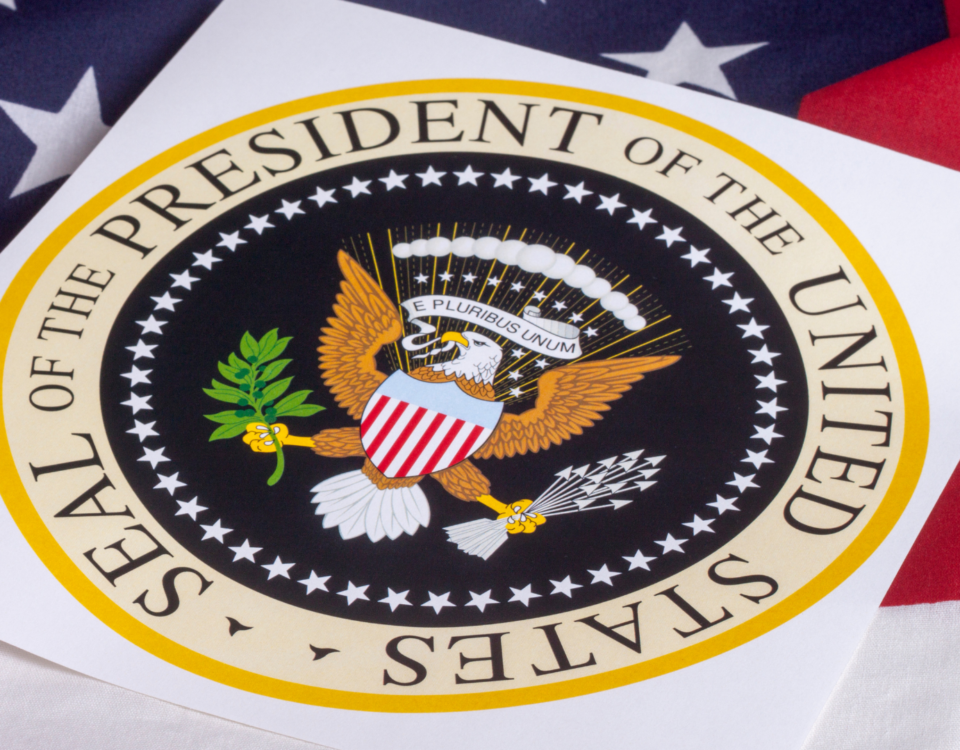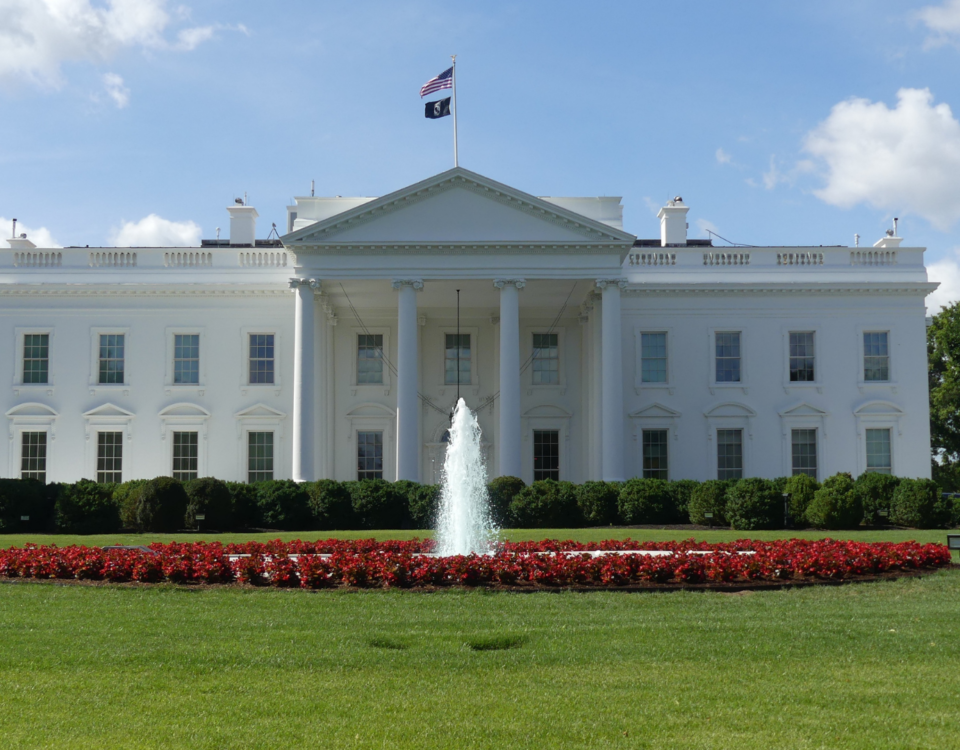
Intellicast S4E19 – Return to the Office and MR News
May 28, 2021
Brand Perception Changes: What Brands Are Viewed as Patriotic or Not
June 7, 2021EMI is consistently researching the sample landscape and evaluating differences in sample sources. We also research opinions around current events and hot topics. Since 2019, we have researched perceptions around marijuana legalization. In this blog, we will look at how these perceptions have changed over the years, as well as differences by panel and certain demographics.
Marijuana Legalization: 2019 to 2021
Respondents were asked which drugs, if any, they believe should be legalized in the United States. From 2019 to 2021, there has been a 6% decrease in respondents who are in favor of legalizing marijuana in total; however, the change from the past year alone has only been a 1% decrease.
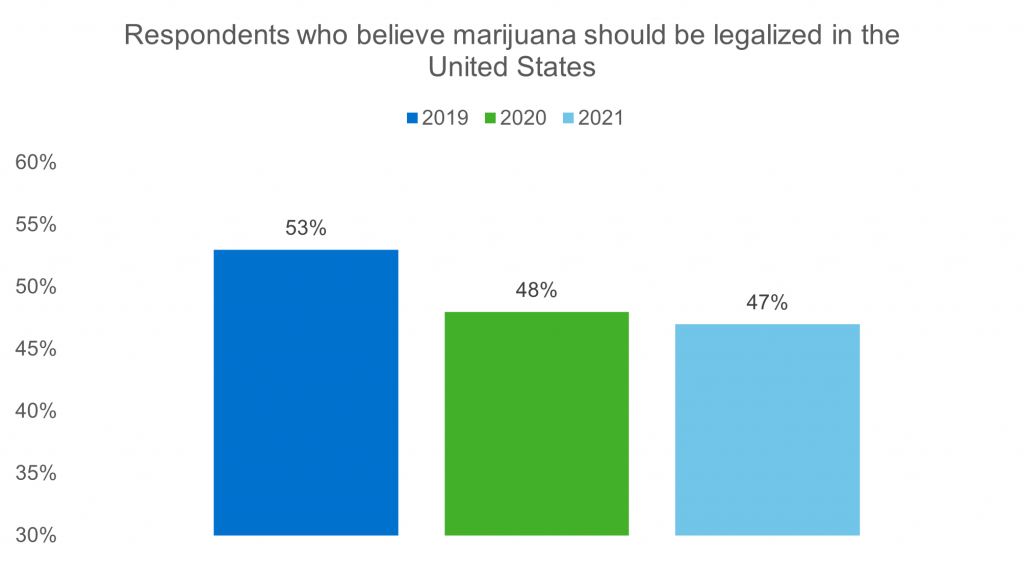
When we distinguish between uses of the drug, we can see that trends in opinion toward marijuana legalization seem to differ. Over the past two years, there has been a shift away from marijuana legalization for medical use and toward legalization for personal or recreational use. Of those who believe marijuana should be legalized, the number of respondents who favor legalization for personal or recreational use has increased by 3%, whereas the number of respondents in favor of medical use has decreased by 8%.


Differences by Panel
Opinions toward marijuana legalization vary considerably by panel. Of the 11 panels shown below, four experienced an increase in respondents in favor of marijuana legalization from 2020 to 2021, while six panels experienced a decrease, and panel F remained the same. We can also see that some panels are more volatile and experienced more substantial changes than others from one year to another. For example, panel H saw a 17% decrease in those who favor marijuana legalization from 2020 to 2021.

Differences by Gender
The proportions of male and female respondents who are in favor of marijuana legalization seem to be fairly similar, with males at 49% and females at 47%.
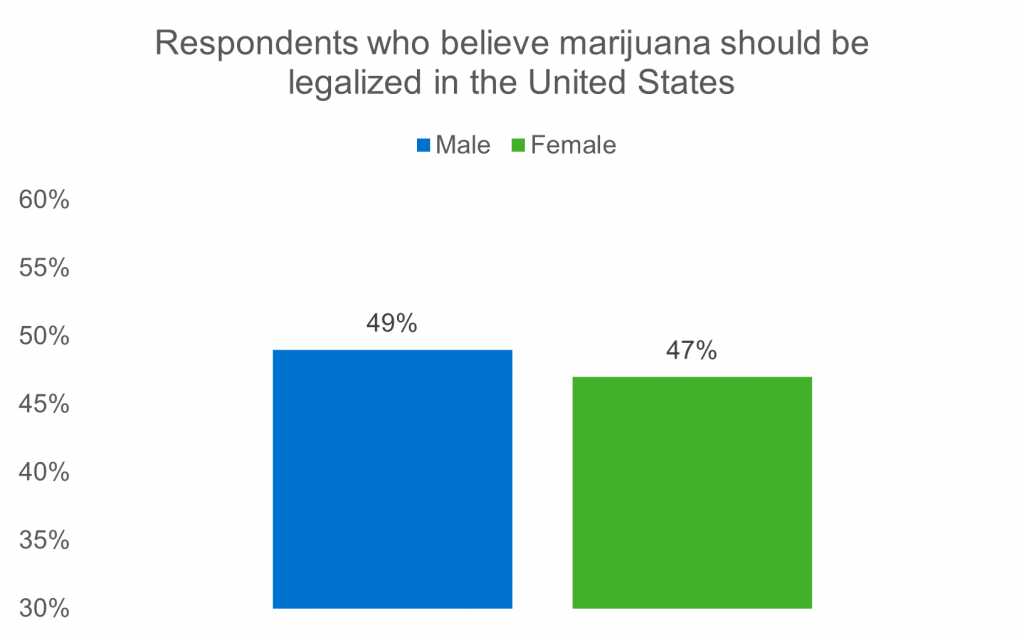
However, when we look at different uses of the drug, we can see that males are more likely to be in favor of legalizing marijuana for personal/recreational use, whereas females are more likely to be in favor of legalizing marijuana for medical use.
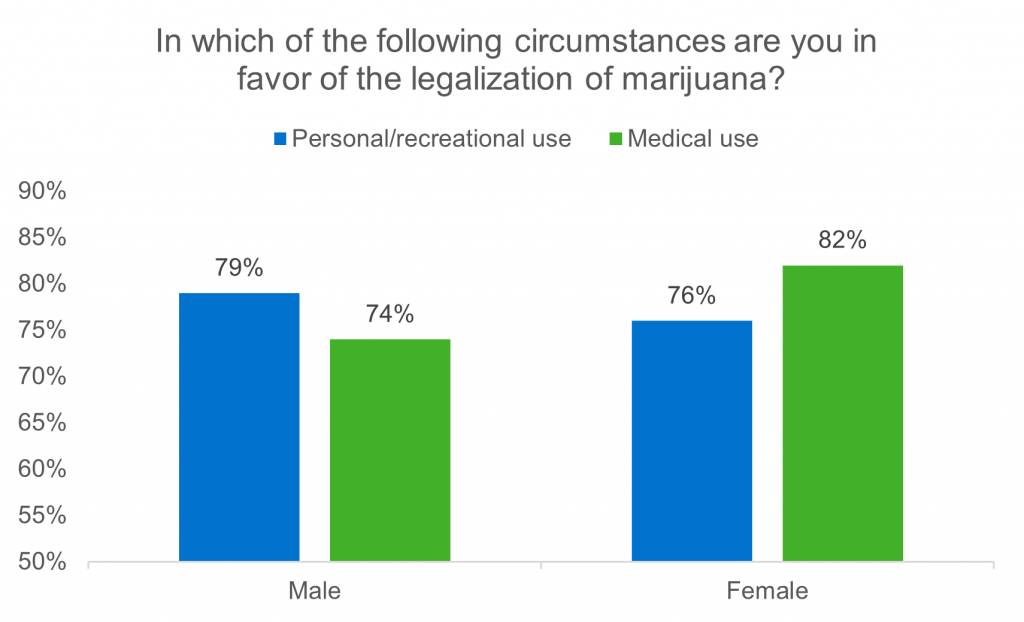
Differences by Age Group
Like gender, age is also a factor that influences opinions toward marijuana legalization. When segmented by age group, we can see that only 33% of those age 75 and older are in favor of legalizing marijuana.
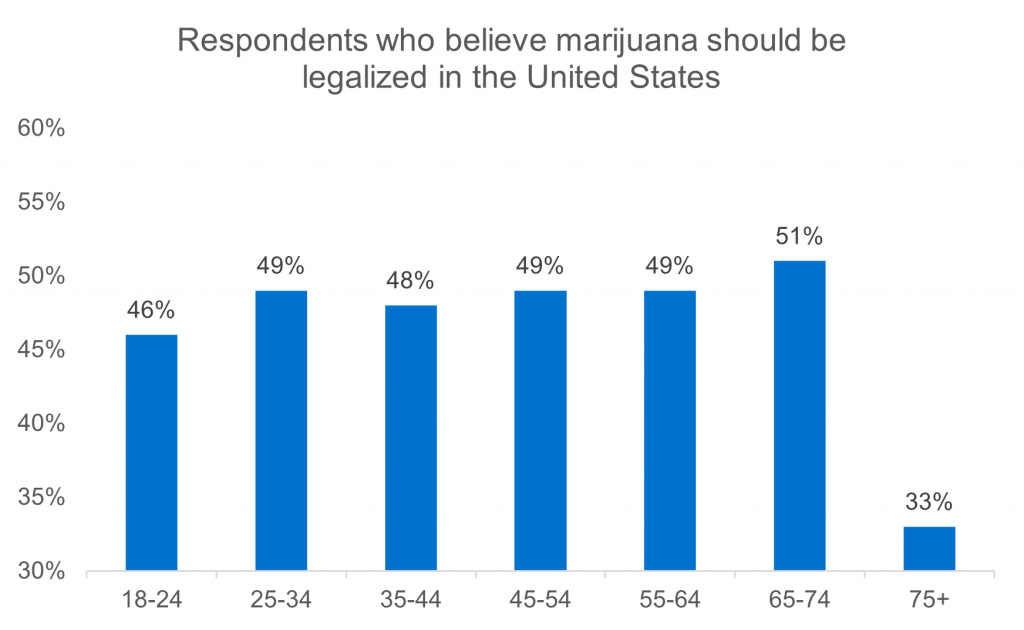
Age groups differ even more when it comes to the circumstances in which marijuana could be legalized. While those age 25-34 are most likely to be in favor of legalization for personal/recreational use, the older age groups are much more likely to be in favor of legalization for medical use.
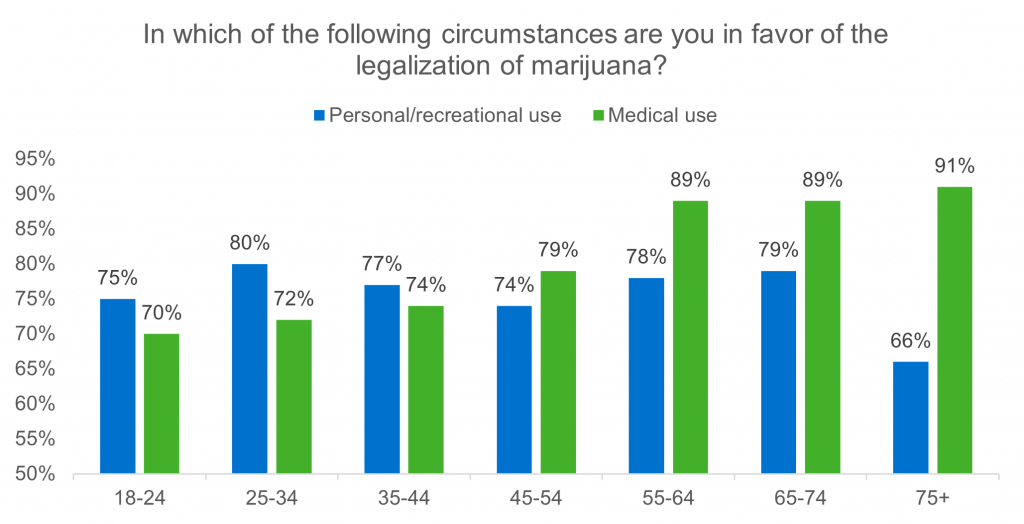
Differences by Political Party
Attitudes toward marijuana legalization differ greatly between respondents of different political parties. 53% of Democrats are in favor of legalizing marijuana, while only 38% of Republicans are.

In terms of marijuana usage, Republicans are more likely to be in favor of legalizing marijuana for medical use rather than personal or recreational use, whereas Democrats are equally likely to be in favor of legalizing marijuana either for personal/recreational or medical use.
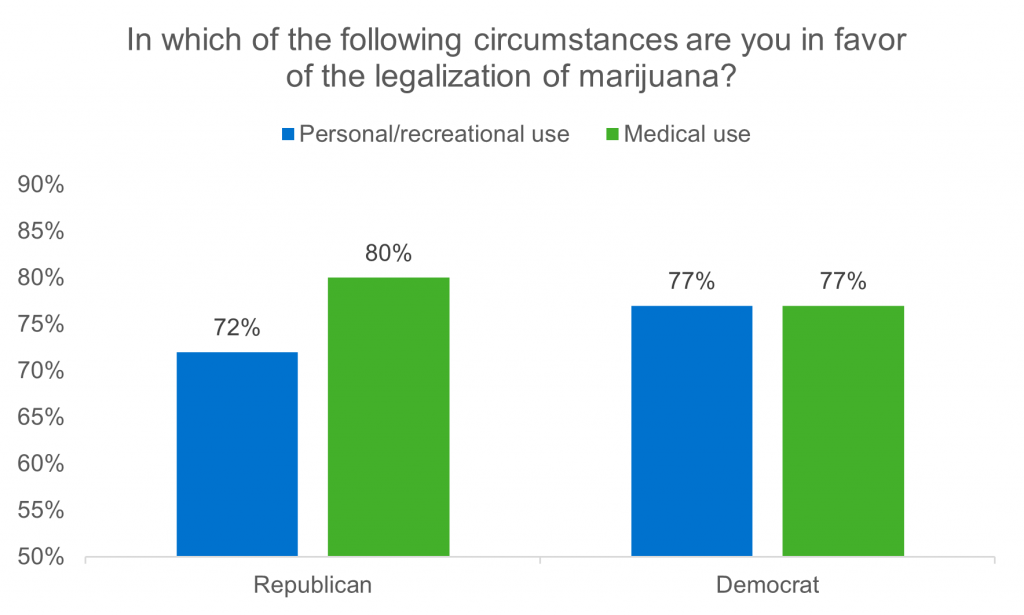
There are many reasons why these differences in opinion exist. One reason is because panels are built and managed differently, causing variances among respondents in each panel. Another is because attitudes and behaviors change over time. Both factors can have an impact on your data, which is why we recommend a blended approach to sampling and take the time each year to perform our research-on-research. To follow our research on marijuana legalization over the years, check out the blogs below:
The Sample Landscape: Marijuana Legislation Part 1



